In Photos: Shimmering Cave of the Crystals
Amongst the Crystals
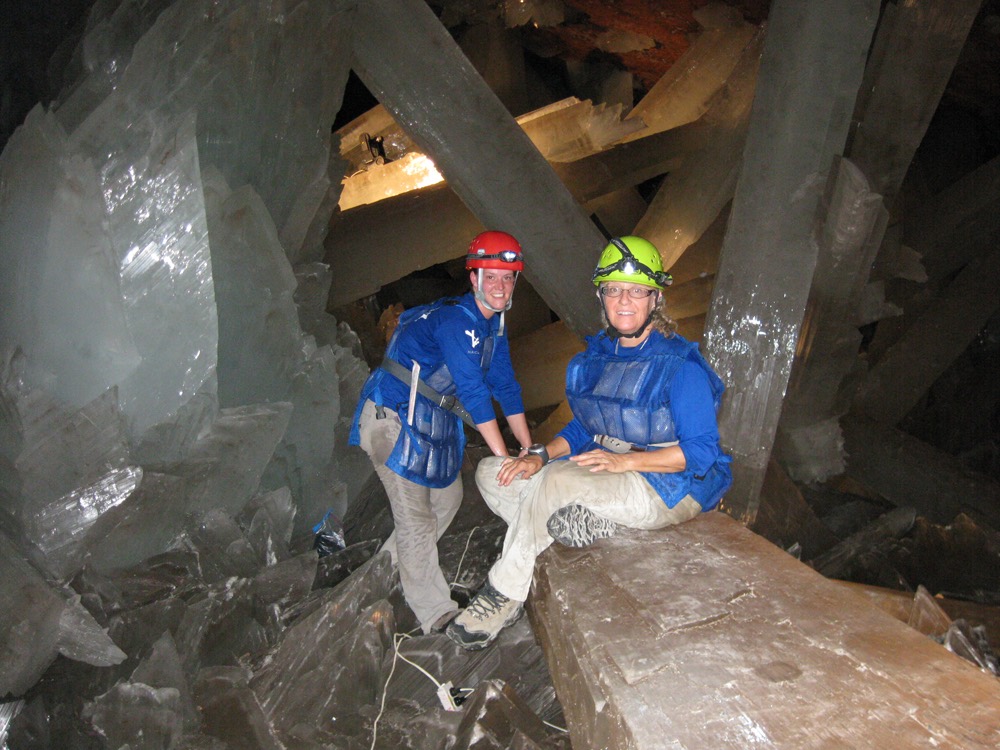
Penelope Boston, then a professor at New Mexico Tech, sits on a giant selenite crystal in the Naica Mine in Chihuahua, Mexico, with colleague Danielle Winget. In 2009, Boston and her team used sterile tools to drill into fluid pockets inside the giant crystals, from which they cultured organisms that may have been dormant for between 10,000 and 50,000 years. The scientists described their research on Feb. 17, 2017, at the annual meeting of the American Association for the Advancement of Science.
[Read the full story on the revived microbes from the crystal cave]
Suited Up
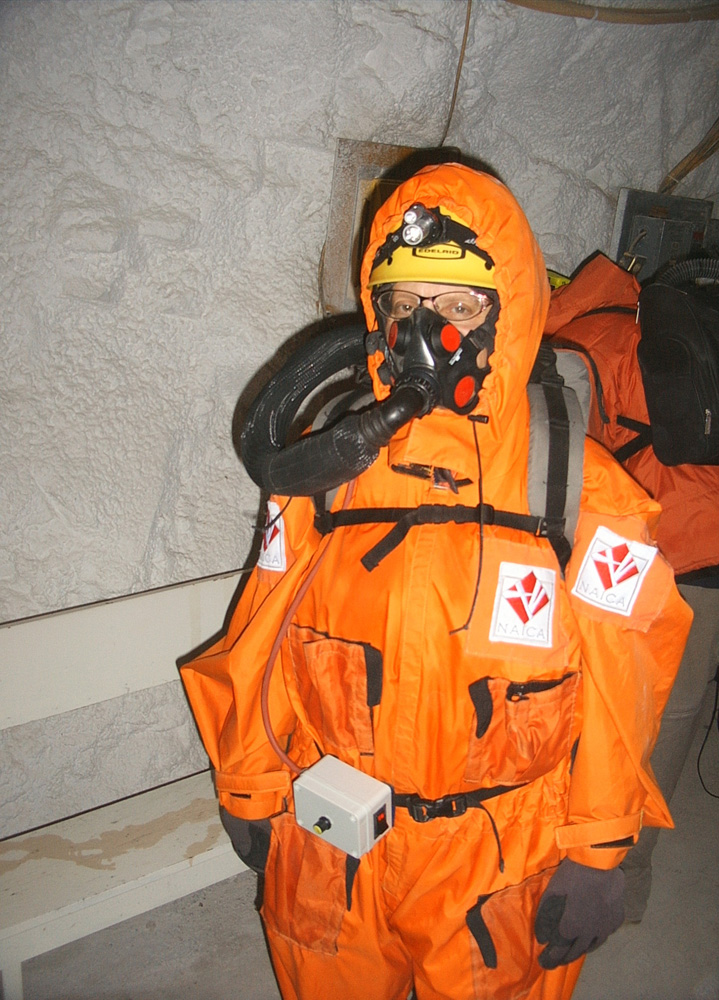
Penelope Boston, who now heads up NASA's Astrobiology Institute, wears protective equipment for exploring the crystal cavern in the Naica mine. Temperatures in the mine can reach nearly 140 degrees Fahrenheit (60 degrees C) and the humidity is between 90 percent and 100 percent, so anyone who enters must bring an oxygen supply and wear special clothing, including vests stashed with ice packs. Researchers could only stay in the crystal cavern for about 30 minutes at a time.
Mini-Crystals
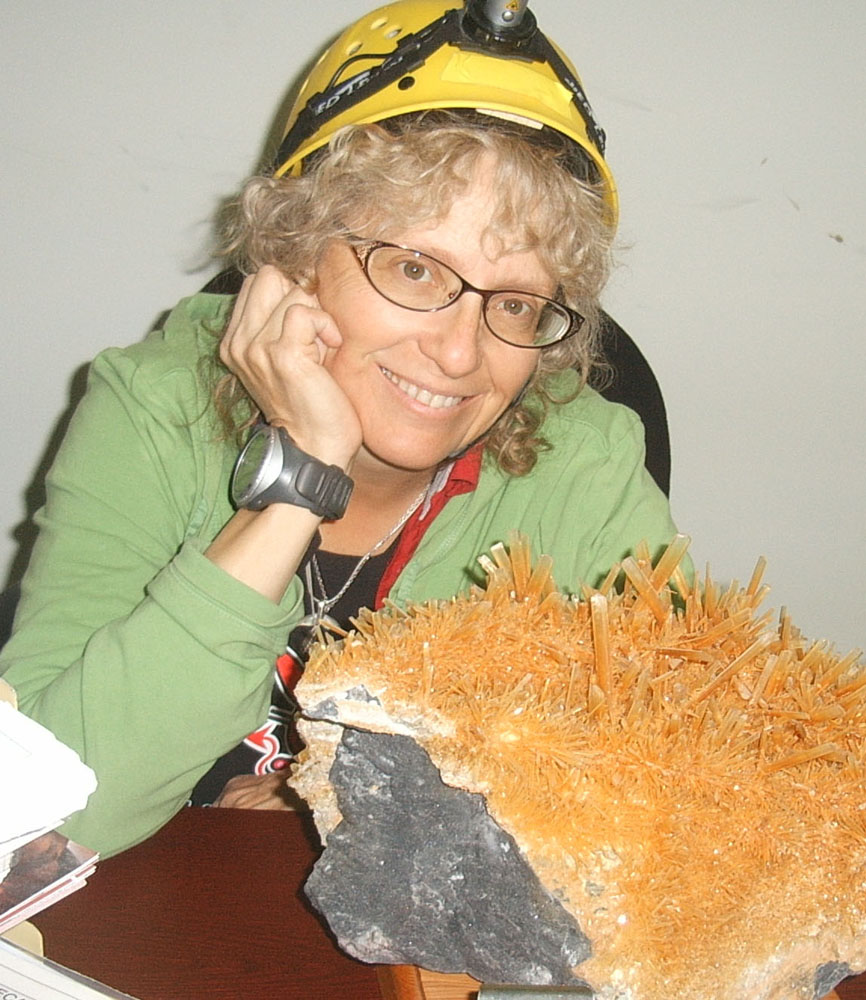
Penelope Boston with a sample of small selenite crystals. These crystals are a form of gypsum that develop over tens of thousands of years in geothermal, mineral-rich groundwater. In the Naica Mine's Cave of the Crystals, selenite crystals have grown as long as 36 meters (11 feet).
Underground Recovery
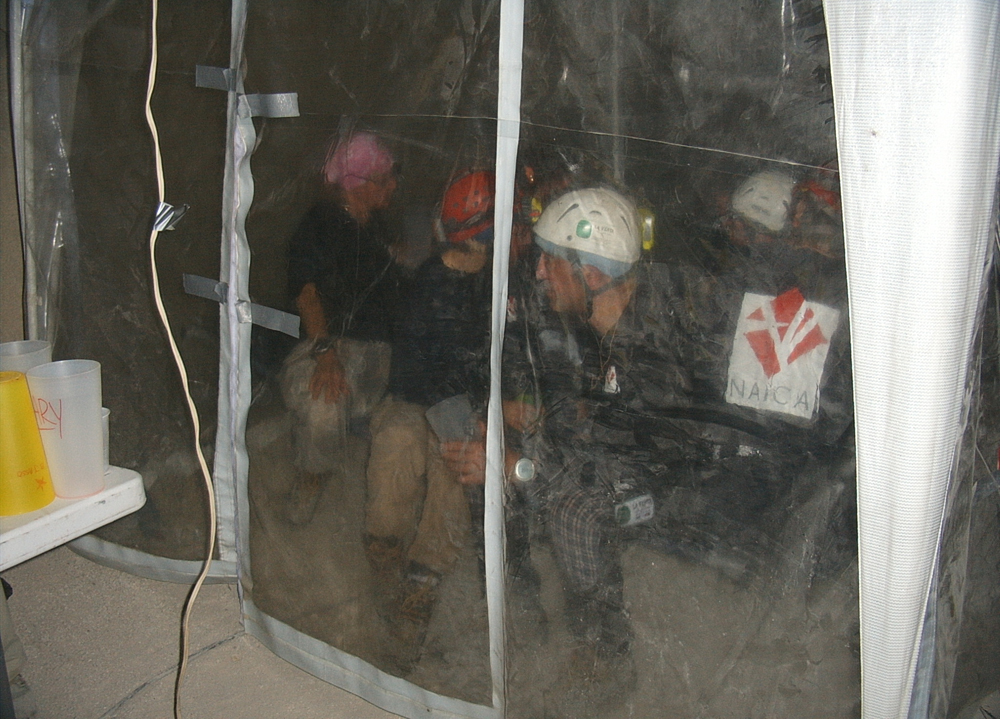
After thirty minutes in the Cave of Crystals, researchers had to chug electrolyte beverages and recover in an air-conditioned tent in a nearby cavern. Portable air conditioners kept the temperature in the tent down to about 100 degrees F (38 degrees C).
[Read the full story on the revived microbes from the crystal cave]
Humid Science
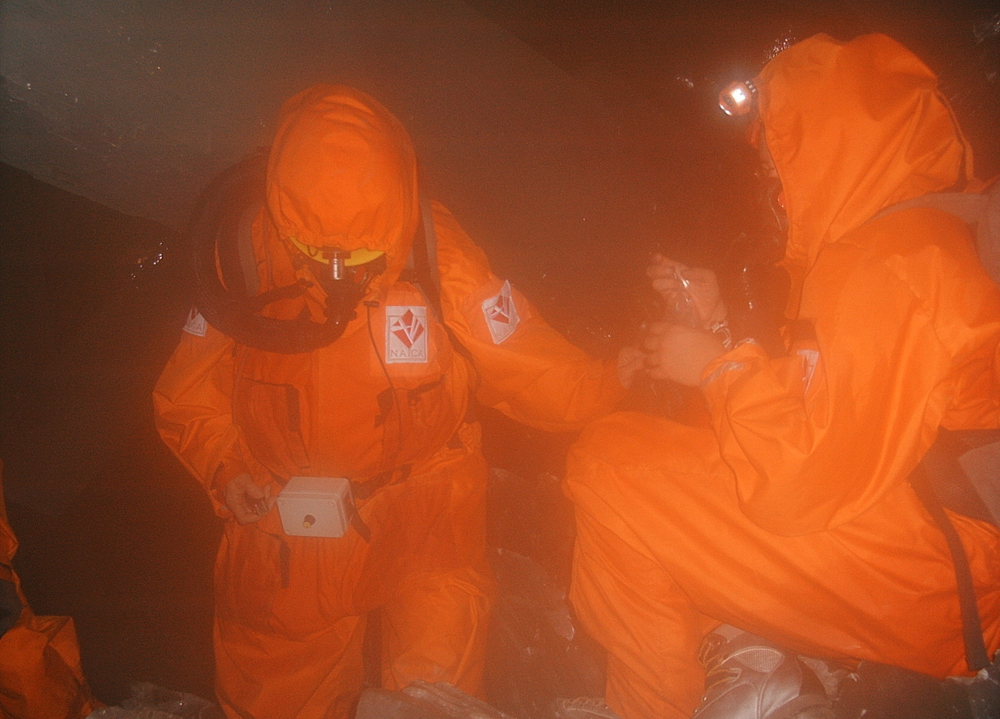
Nearly 100 percent humidity makes for a steamy work environment in the Cave of Crystals. The cavern was submerged in groundwater for millennia before the company operated the Naica Mine pumped the groundwater out and accidentally discovered the chamber during mining activities. As of 2015, the mine had shut down and the crystal cave was again flooded.
Sign up for the Live Science daily newsletter now
Get the world’s most fascinating discoveries delivered straight to your inbox.
Amazing Underworld
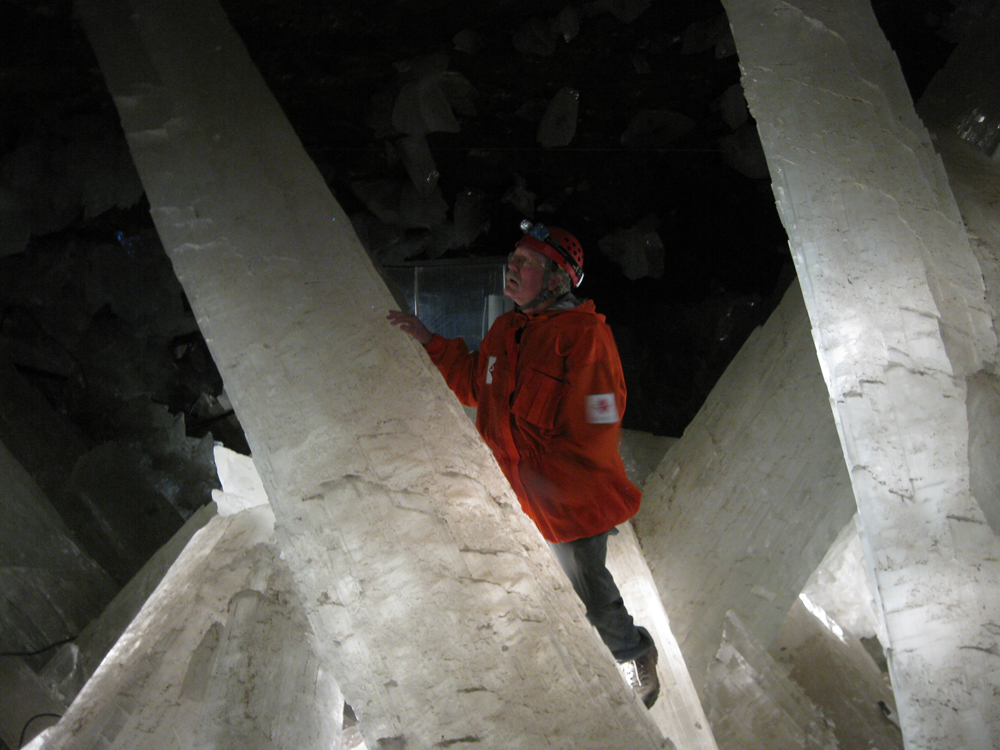
Mike Spilde, a professor at the University of New Mexico, gazes at giant selenite crystals in a chamber in the Naica Mine. Boston, Spilde and their colleagues sampled for microbes within the cave environment, including within the crystals themselves.
"The amount of work that it's going to take to really characterize that environment and its inhabitants is stupefying," Boston said.
Mineral Maze
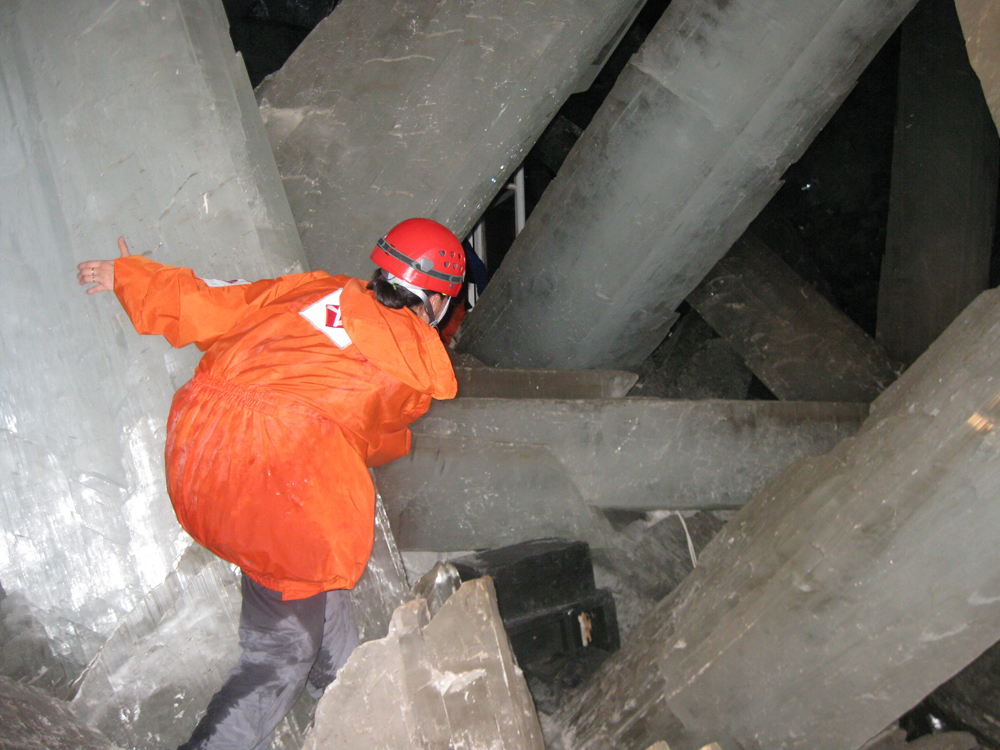
Researcher Danielle Winget peers around a crystal in the Naica Mine's Cave of Crystals. Microbes found dormant in fluid pockets in these crystals grew in the lab, apparently "waking up" for the first time in 10,000 to 50,000 years.
Naica, Mexico
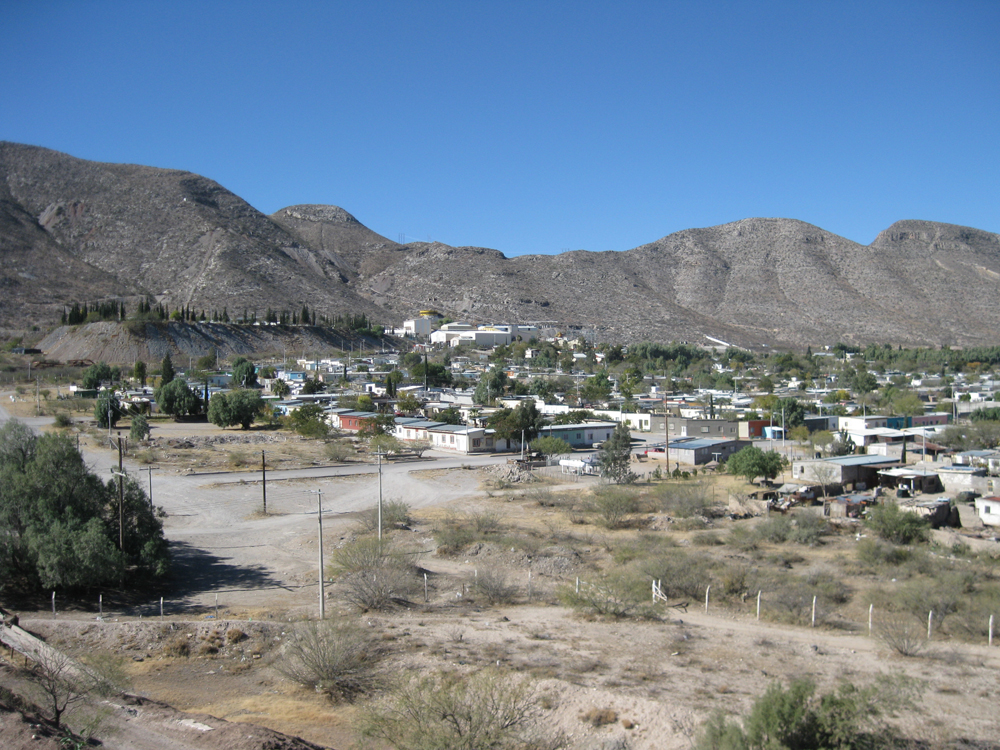
The town of Naica, Mexico, sits approximately 1,000 feet (300 meters) above the hidden crystal cave below. The cave was unknown until 2000, when miners inadvertently discovered it. The Naica Mine itself was the largest lead producer in Mexico, but shut down indefinitely in 2015.
[Read the full story on the revived microbes from the crystal cave]
Cramped Quarters
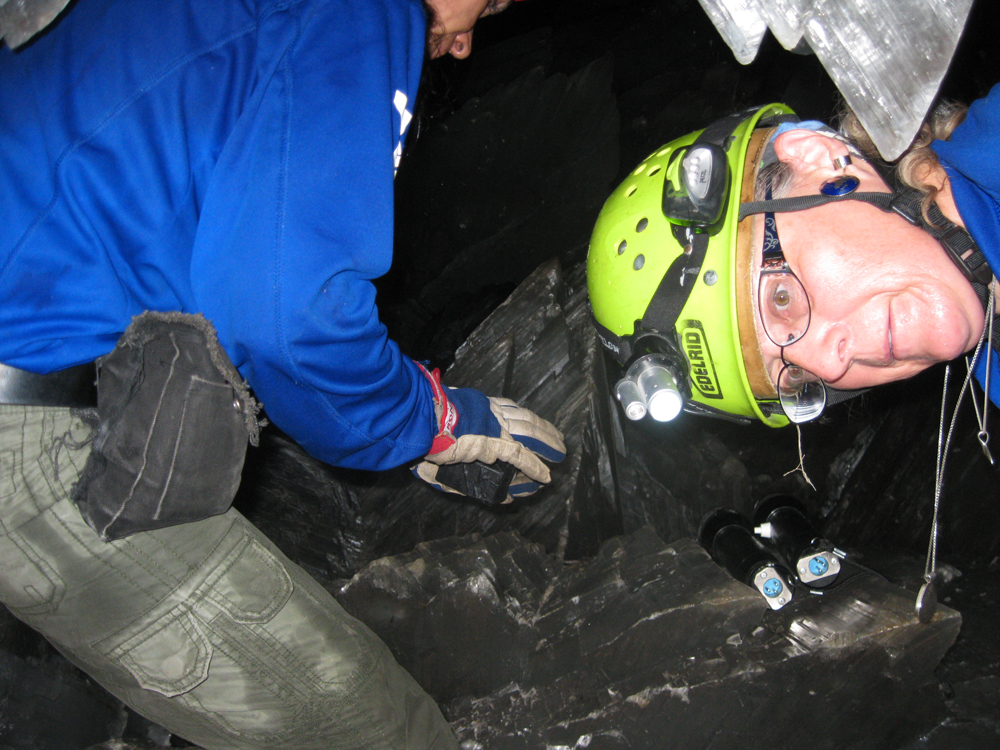
Researchers work in cramped, overheated quarters in the Naica Mine's Cave of Crystals. The team took two trips to the cavern, a preliminary visit in 2008 and a visit to collect final samples in 2009.
Surrounded by Crystals
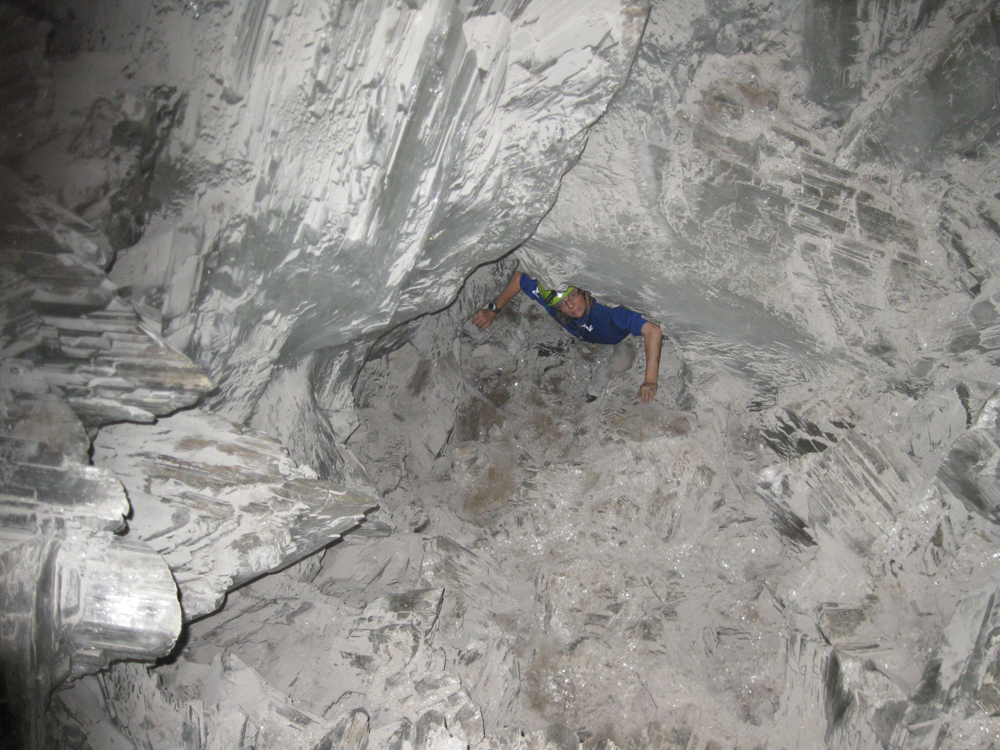
Dr. Penelope Boston peers into a crystalline world in the Naica Mine's crystal cavern. The microbes the team found in the cavern are unknown to science and genetically distant from any known microbes on Earth. Their nearest relatives are other organisms that live in extreme environments, Boston told Live Science.
Tight Fit
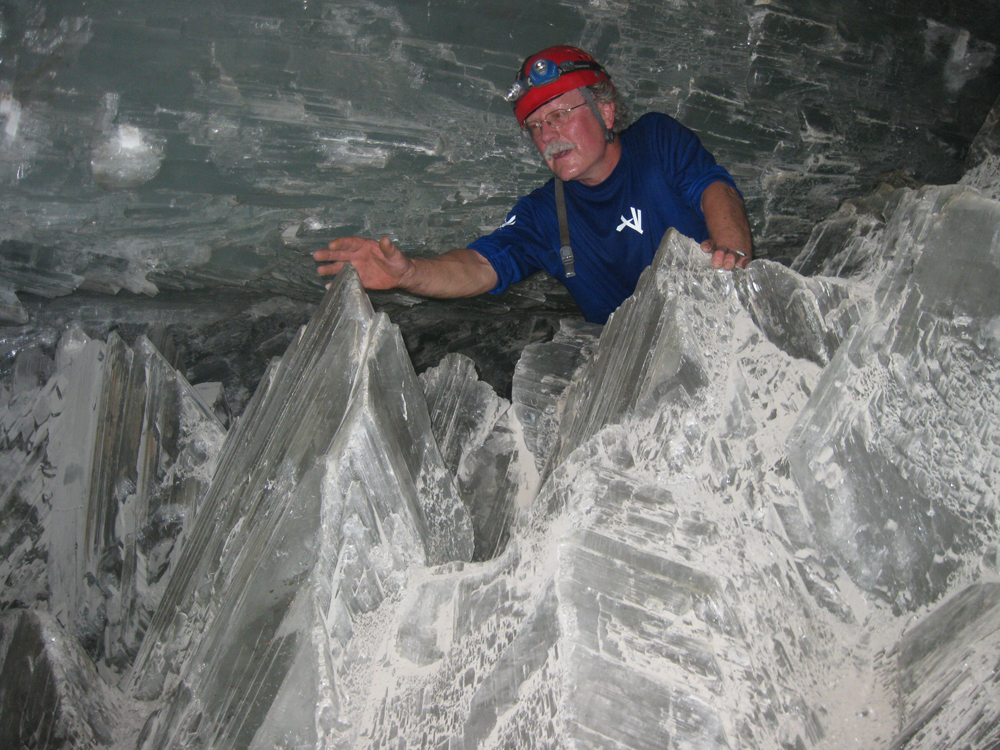
Researcher Mike Spilde squeezes past giant crystals in the Naica Mine. Extreme heat and humidity limit the time that humans can spend in the crystal-studded cavern within the mine.

Stephanie Pappas is a contributing writer for Live Science, covering topics ranging from geoscience to archaeology to the human brain and behavior. She was previously a senior writer for Live Science but is now a freelancer based in Denver, Colorado, and regularly contributes to Scientific American and The Monitor, the monthly magazine of the American Psychological Association. Stephanie received a bachelor's degree in psychology from the University of South Carolina and a graduate certificate in science communication from the University of California, Santa Cruz.









